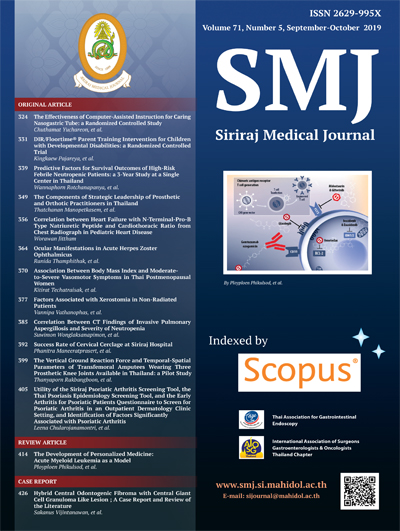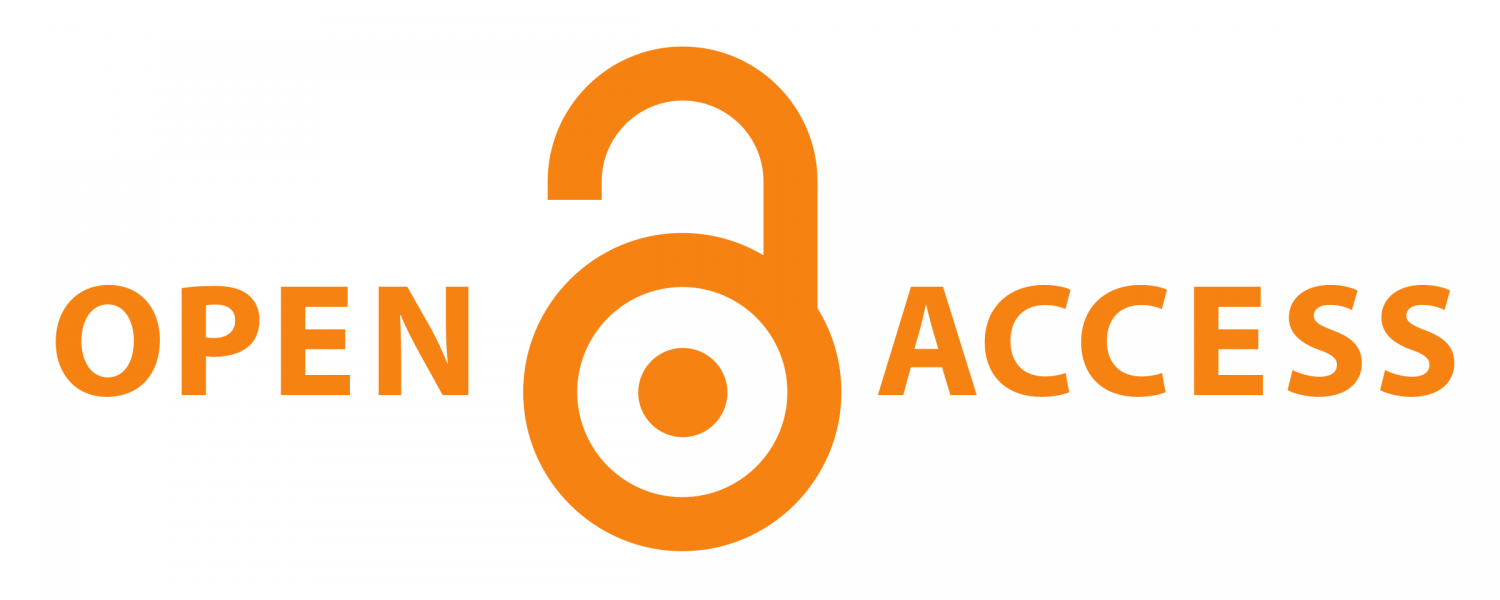Correlation between Heart Failure with N-Terminal-Pro-B Type Natriuretic Peptide and Cardiothoracic Ratio from Chest Radiograph in Pediatric Heart Disease
DOI:
https://doi.org/10.33192/Smj.2019.54Keywords:
NT-proBNP; cardiothoracic ratio; heart failureAbstract
Objective: The aim of this study is to determine the correlation between the symptom of heart failure and basic investigations; N-Terminal-Pro-B Type Natriuretic Peptide (NT-proBNP) and cardiothoracic (CT) ratio from chest radiograph in pediatric heart disease.
Methods: One-hundred-eighty children (aged 1-15 years) with underlying heart disease were enrolled in this prospective cross-sectional study. The heart failures were categorized based on the Ross classification into 2 groups, non-heart failure (Ross classification I) and heart failure (Ross classification II-IV). The NT‐proBNP level was determined and chest radiograph was done in posteroanterior upright position for CT ratio.
Results: The mean NT-proBNP level was 223.1 pg/ml (+180.3) and a mean CT ratio was 53.6% (+5.6) in the non-heart failure group. The mean NT-proBNP level was 1,054 pg/ml (+1,840.3) and a mean CT ratio was 58.6% (+6.1) in heart failure group. There was a significantly positive correlation between heart failure symptoms and the level of NT-proBNP and CT ratio. In this study, the cut-off value of NT-proBNP for heart failure was more than 400 pg/ml (OR 6.97, ROC 0.694, sensitivity 52.6%, specificity 86.3%) and CT ratio more than 55% (OR 3.57, ROC 0.654, sensitivity 68%, specificity 62.8%).
Conclusion: In pediatric heart diseases, there are strong positive correlations between heart failure with both NT-proBNP and CT ratio. These correlations help in the diagnosis of heart failure. NT-proBNP level more than 400 pg/ml and CT ratio more than 55% are indicative of heart failure in our population. Both investigations are inexpensive, readily available and do not require specialist experts.
Downloads
Published
How to Cite
Issue
Section
License
Authors who publish with this journal agree to the following conditions:
Copyright Transfer
In submitting a manuscript, the authors acknowledge that the work will become the copyrighted property of Siriraj Medical Journal upon publication.
License
Articles are licensed under a Creative Commons Attribution-NonCommercial-NoDerivatives 4.0 International License (CC BY-NC-ND 4.0). This license allows for the sharing of the work for non-commercial purposes with proper attribution to the authors and the journal. However, it does not permit modifications or the creation of derivative works.
Sharing and Access
Authors are encouraged to share their article on their personal or institutional websites and through other non-commercial platforms. Doing so can increase readership and citations.















